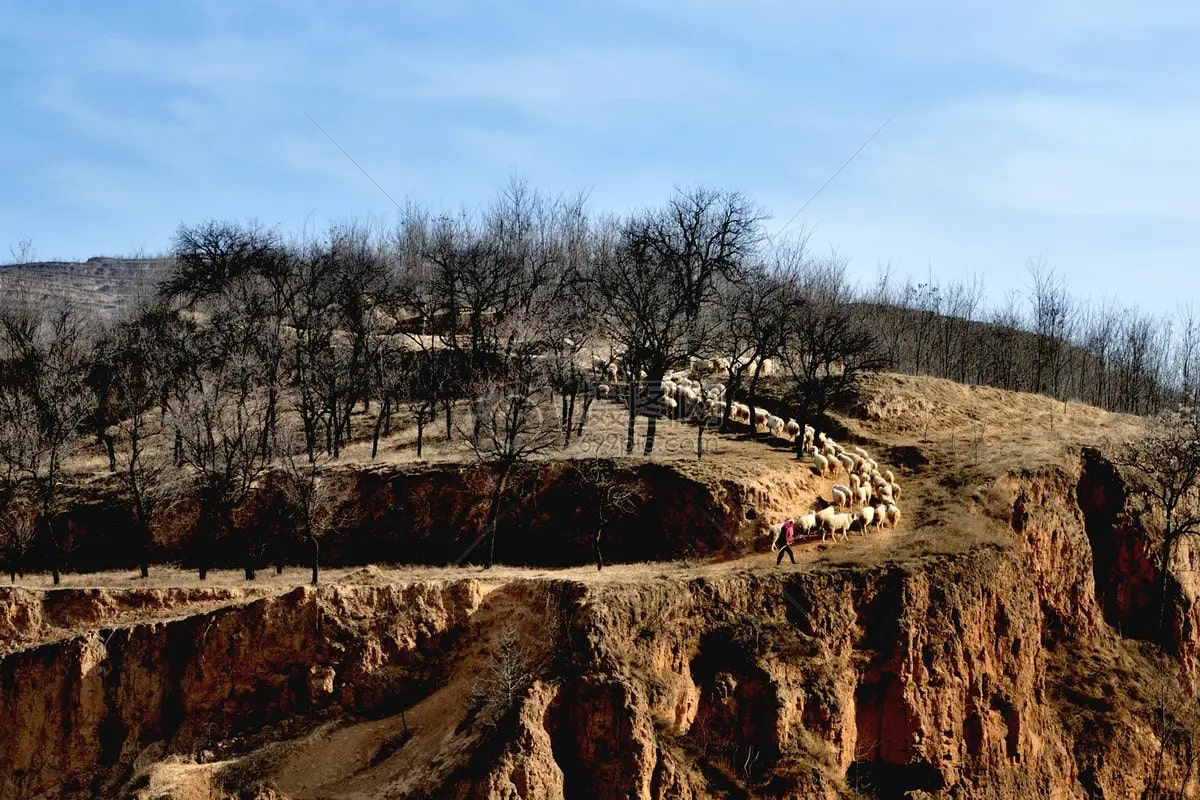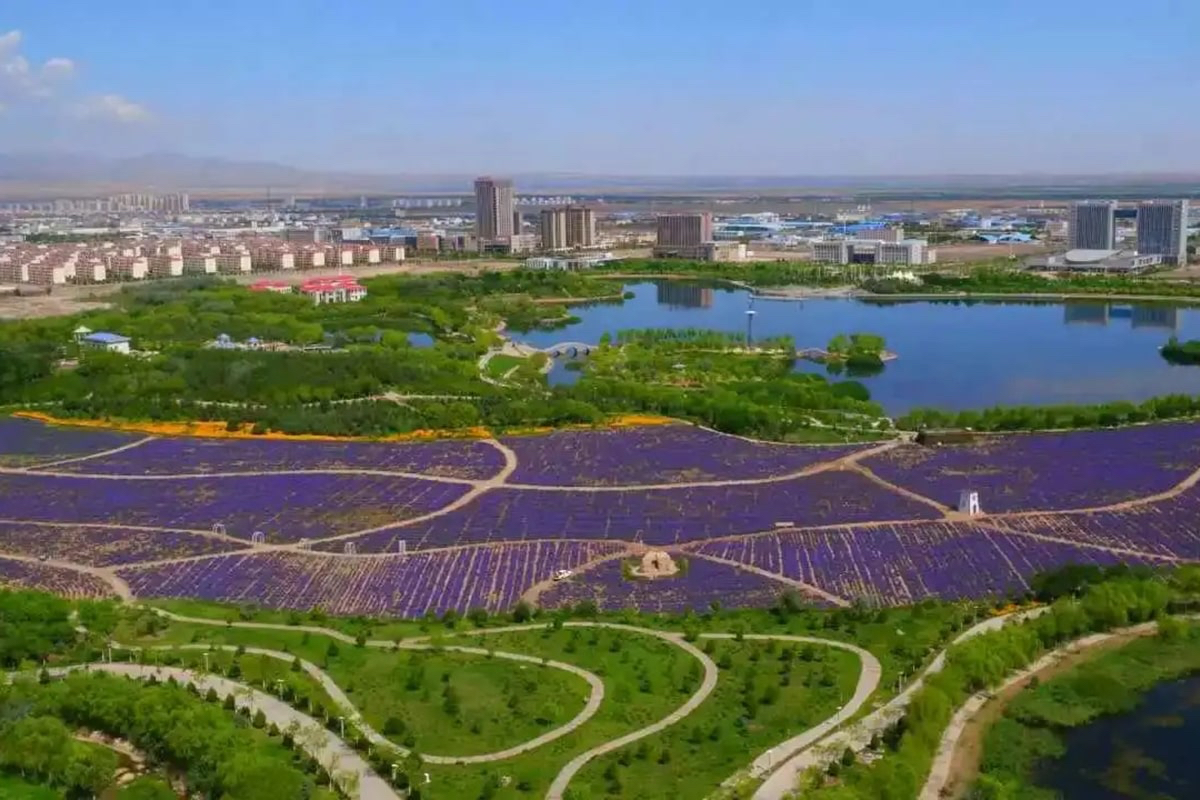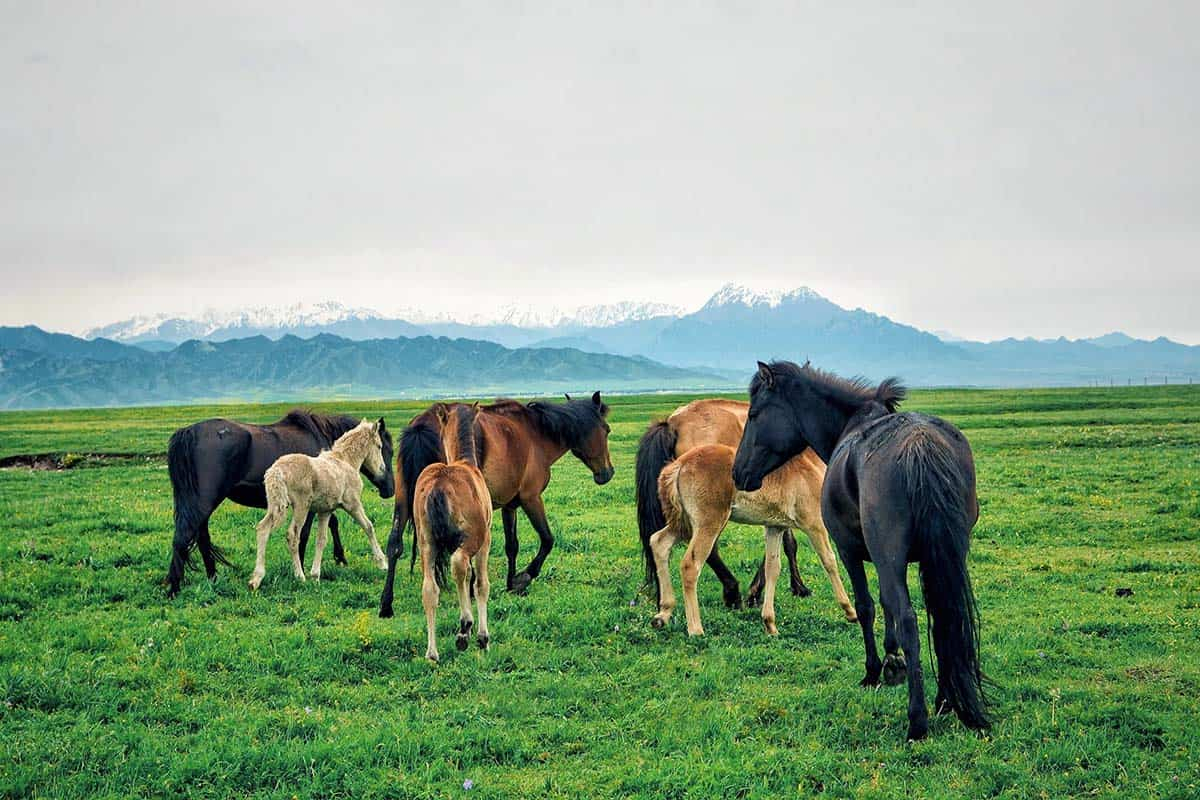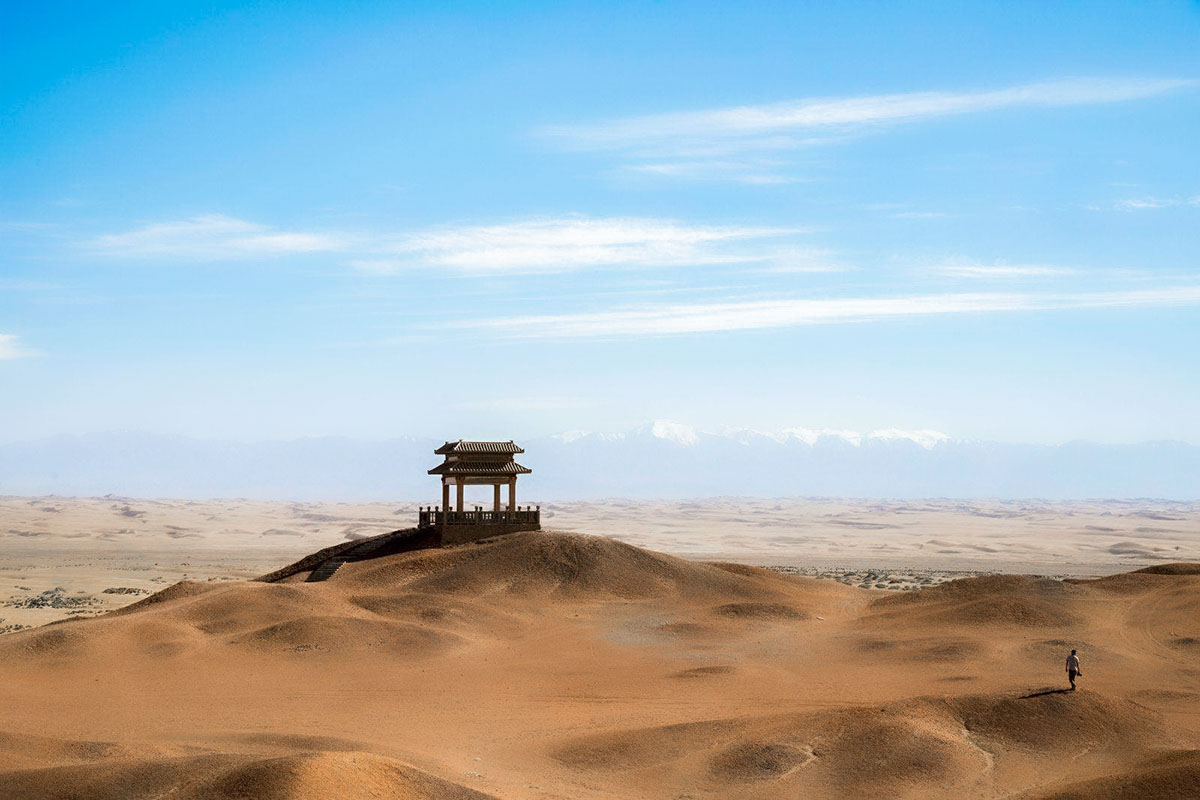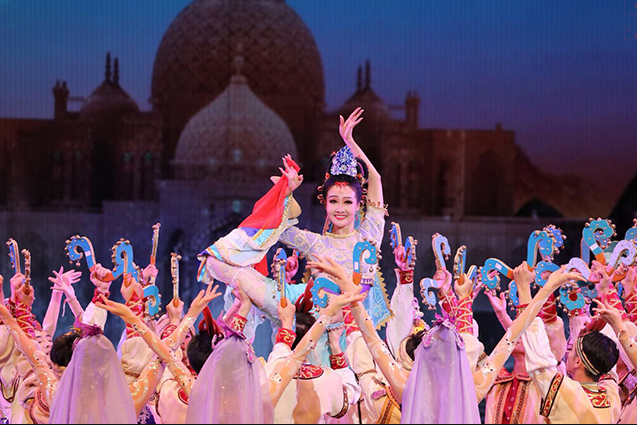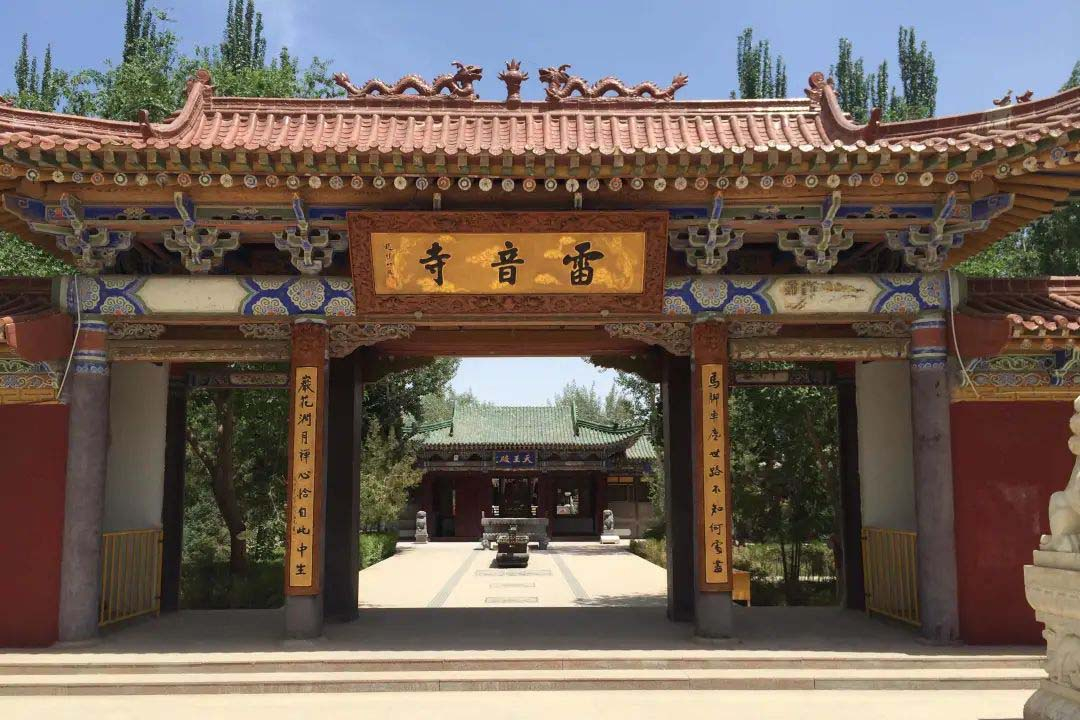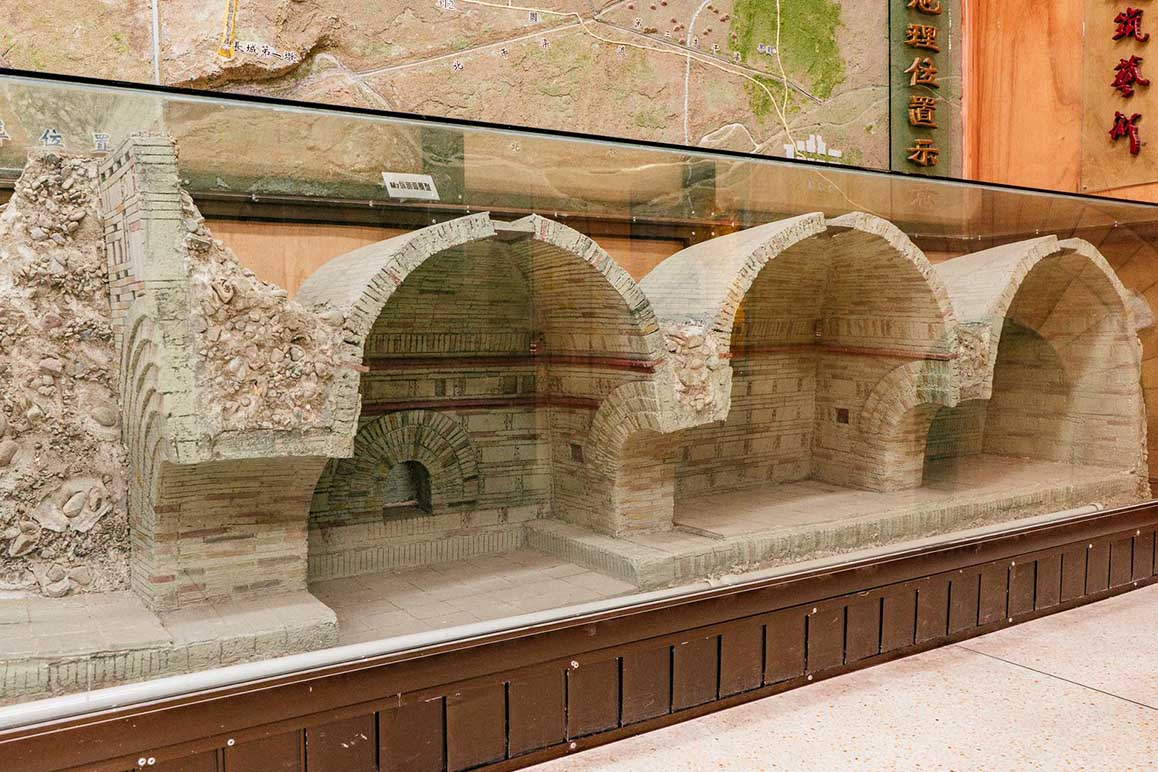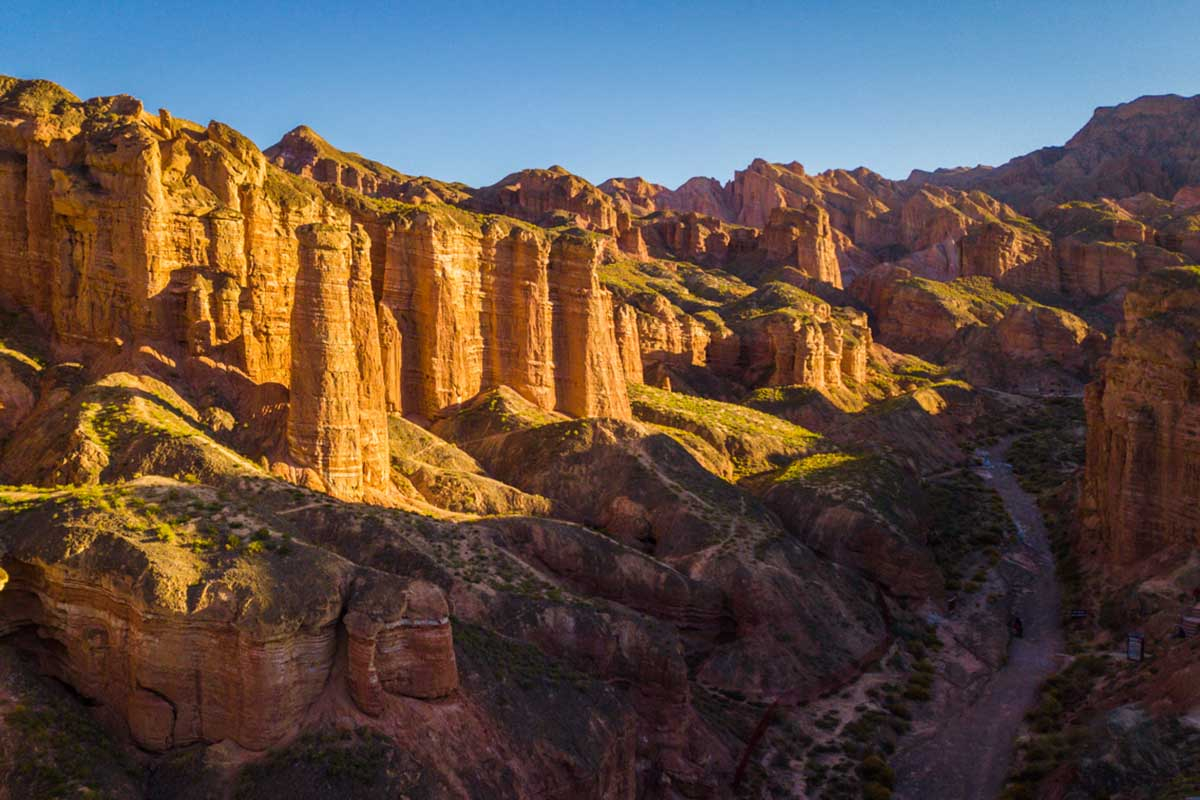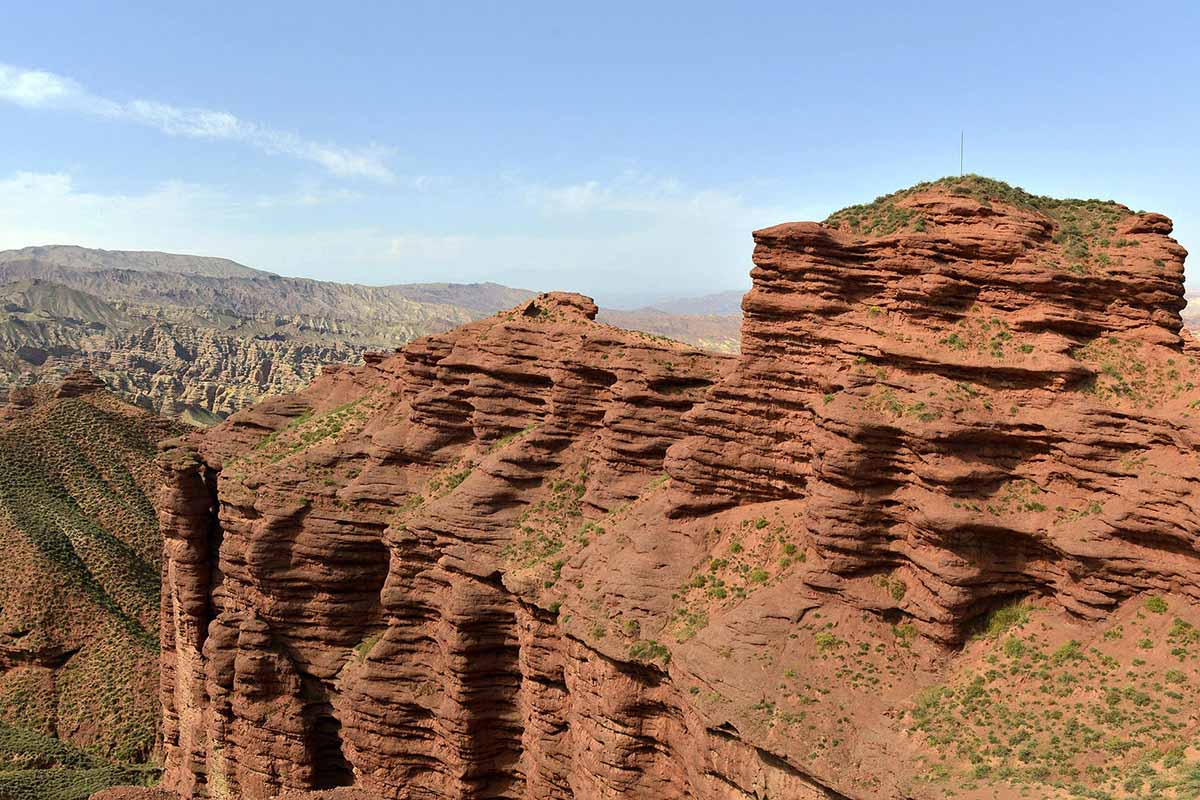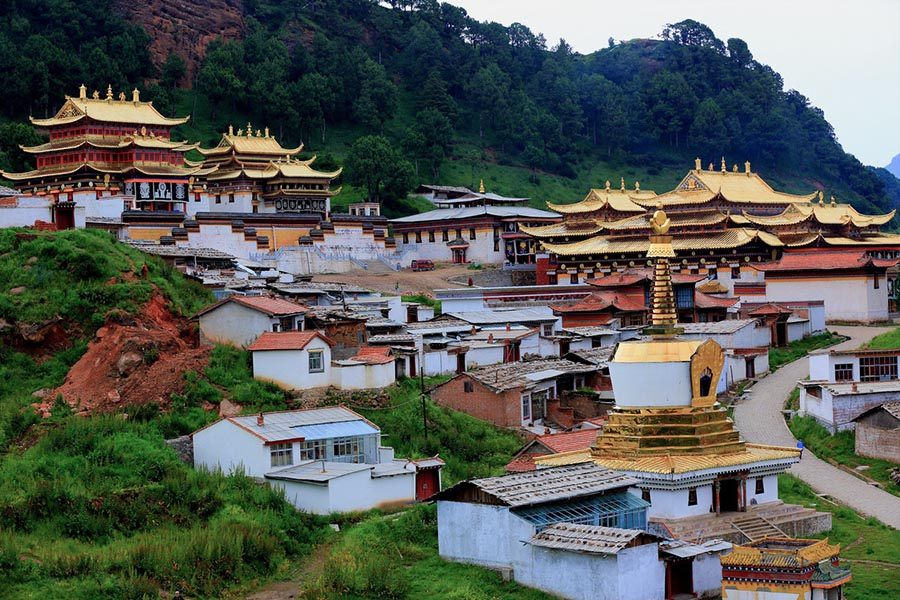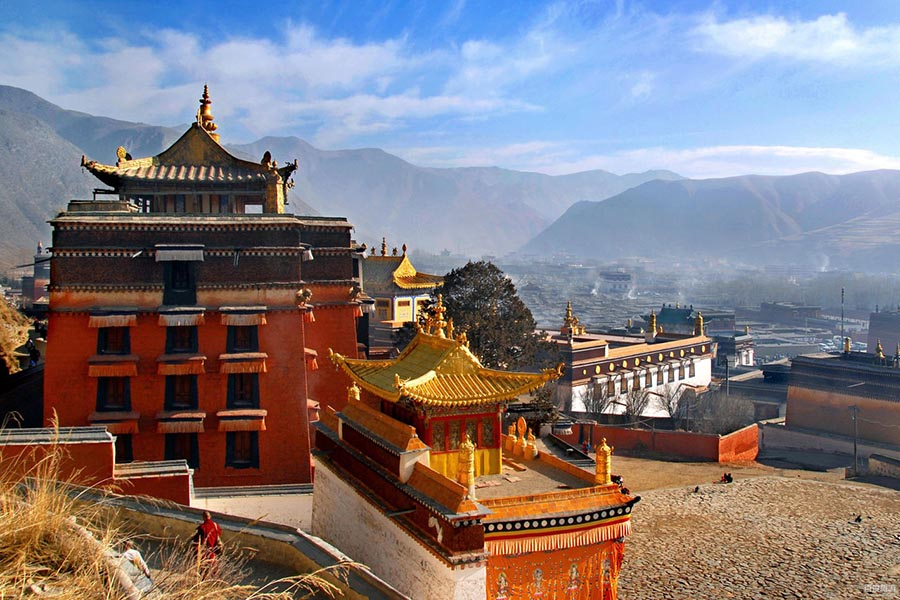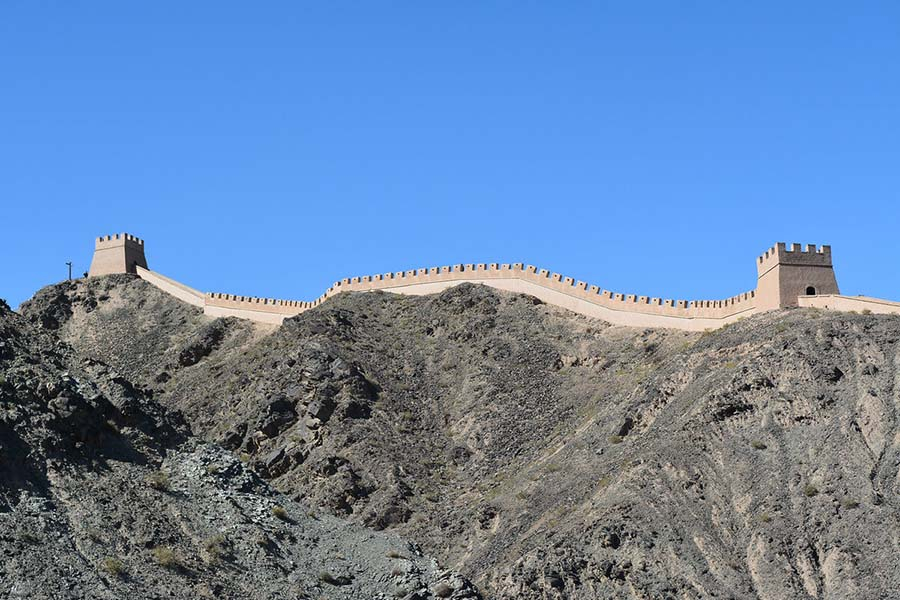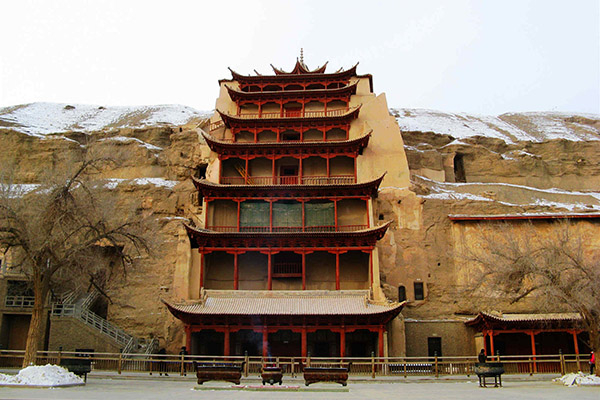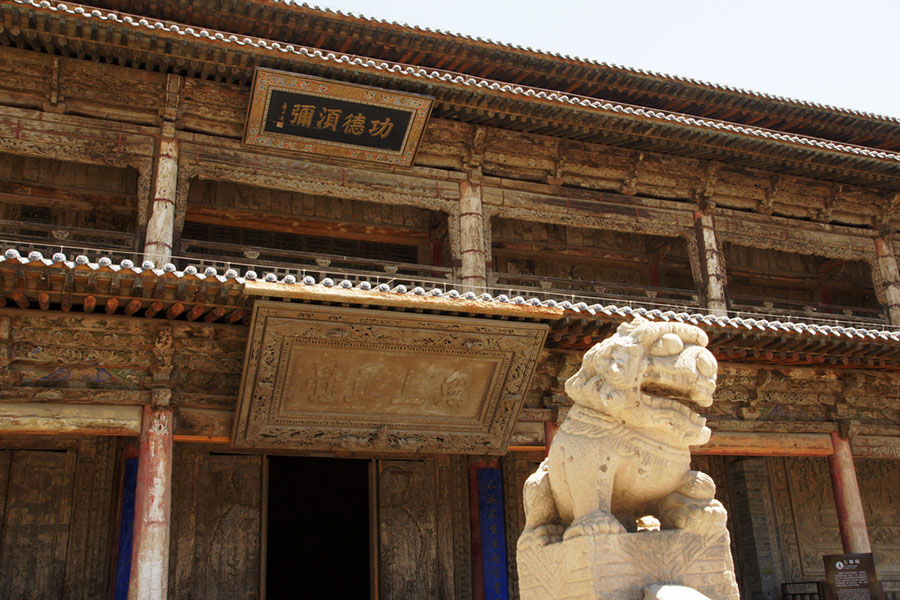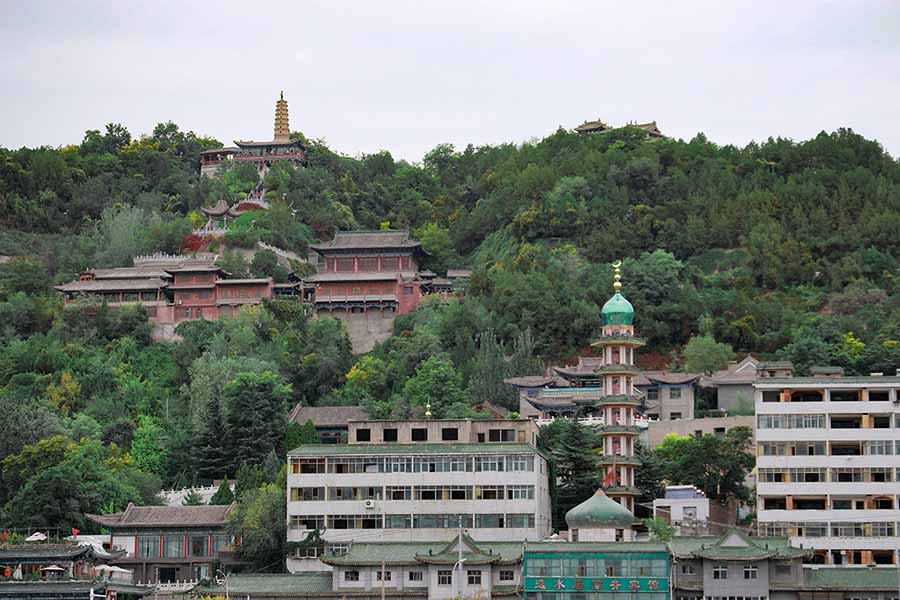Leiyin Temple
Chinese Name: 雷音寺 (Lei Yin Si)
Location: No.28, Minshan Road, Dunhuang City, Jiuquan City, Gansu Province
Ticket: Free
Estimated tour time: 1 hour
Recommended time to visit: All year round
Nearby attractions: Minsha Mountain & Crescent Spring , Dunhuang Ancient City, Dunhuang Mogao Grottoes, etc.
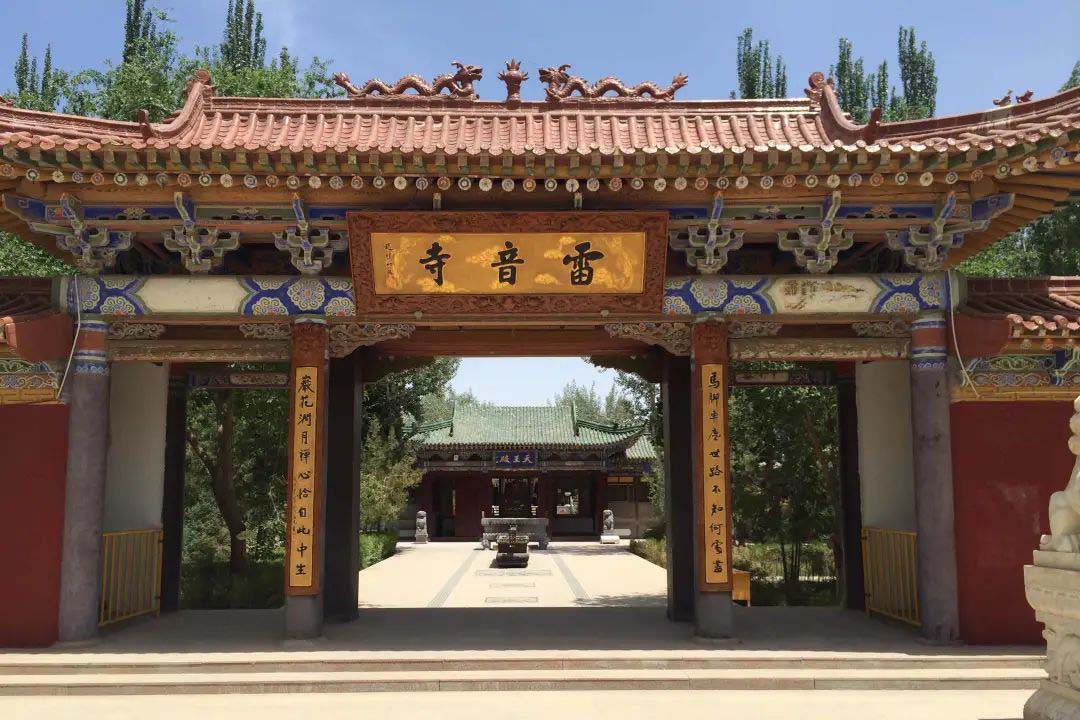
Leiyin Temple is located on the left side of the highway from Dunhuang City to the Crescent Spring Scenic Spot, about 4 kilometers away from the urban area. Legend says there was the Leiyin Temple near the Crescent Spring in ancient times but was buried by wind and sand. In 1989, Leiyin Temple was rebuilt with donations from Buddhist groups at home and abroad and the Dunhuang Buddhist Association. It was completed in June 1991. The construction area is more than 3000 square meters.
Dunhuang was an important town on the ancient Silk Road and a hub of transportation from the east to the west, where the four cultural systems ofChina, India, Greece and Islam meet. From the Han dynasty(202 BC to 220AD) to the Song Dynasty(960 to 1279 AD), it had been the place where masters in the Western Regions carried forward Buddhism and it was also the only place where the eminent monks from the Central Plains traveled westward by landto seek the Dharma. some of the well known senior monks such as Dharmaraka, Fa Xian, Kumarajiva and Xuanzang left their traces here. Dunhuang has been an auspicious and peaceful place. In the Tang Dynasty, it already had the reputation of "the sacred land of good Kingdom and the holy land of Buddhism".
According to the inscriptions in Mogao Grottoes and the textual research of books about Dunhuang, the original name of Leiyin Temple was Xianyan Temple in the Western Jin Dynasty(265 to 420). It was named "Leiyin Temple in Qing Dynasty(1636 to 1912). Name of the temple changed a few times and the original site was at the Mogao Grottoes. After the Mogao Grottoes became a world cultural heritage site in 1987, the local governmentseparated the cultural relic protection zone from the religious activity zone. In 1989, the government allocated land in Crescent Spring to rebuild the Leiyin Temple.
The whole temple is composed of the main hall, accompanying hall, monk's dormitory and donor's guest rooms. There are 37 statues of Buddha, Bodhisattva, Arhat and disciples. Among them, Daxiong Treasure Hall is the main hall. In the centre of the hall is a white jade Buddha statue from the Han Dynasty. It was donated by the overseas Chinese in Myanmar. On both sides of the Buddha statues is a Bodhisattvas plus 18 coloured statues of Arhats which is quite vivid and lifelike.
- HOTEST
- RECOMMEND
